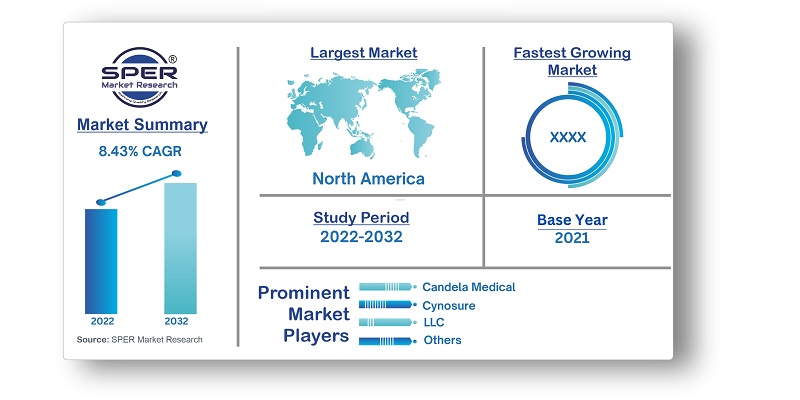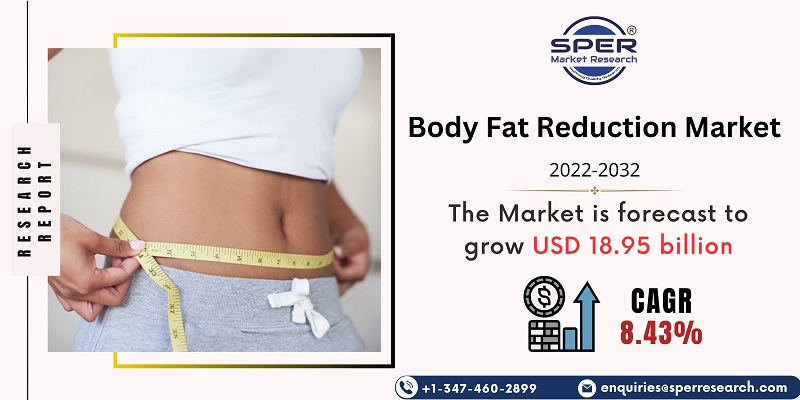
Body Fat Reduction Market Growth, Size, Demand, Trends, Revenue, Share and Future Competition
Body Fat Reduction Market Size- By Procedure, By Service Provider, By Gender- Regional Outlook, Competitive Strategies and Segment Forecasts to 2032
| Published: Nov-2022 | Report ID: HLCA2215 | Pages: 1 - 256 | Formats*: |
| Category : Healthcare | |||
- Increasing Obesity Rates: The rising prevalence of obesity worldwide is a significant driver for the fat reduction market. Obesity is a major public health concern and is associated with several health risks, including cardiovascular diseases, diabetes, and certain types of cancer. As a result, there is a growing demand for fat reduction solutions to help individuals manage their weight and improve their overall health.
- Influence of Social media and Celebrity Culture: Social media platforms and celebrity culture have played a significant role in promoting the desire for a leaner and more sculpted physique. Consumers often aspire to achieve the body standards set by influencers and celebrities. The increased exposure to these ideals has driven the demand for fat reduction solutions, as individuals seek to emulate the appearance of their role models.


| Report Metric | Details |
| Market size available for years | 2019-2032 |
| Base year considered | 2022 |
| Forecast period | 2022-2032 |
| Segments covered | By Procedure, By Service Provider, By Gender |
| Regions covered | North America, Asia-Pacific, Latin America, Middle East & Africa and Europe. |
| Companies Covered | Candela Medical, Cynosure, LLC, VLCC Health Care Limited, Apollo Hospitals Enterprise Limited, Bausch Health Companies Inc., Lumenis Ltd, Sciton Inc., Cutera, Inc., Sisram Medical Ltd, AbbVie Inc. (Allergan Inc.), Others. |
- Fitness and wellness centers
- Health and fitness enthusiasts
- Individuals seeking cosmetic enhancements
- Individuals with excess body fat
- Medical tourism patients
- Postpartum and post-weight loss individuals
- Others
| By Procedure: |
|
| By Service Provider: |
|
| By Gender: |
|
- Global Body Fat Reduction Market Size (FY’2022-FY’2032)
- Overview of Global Body Fat Reduction Market
- Segmentation of Global Body Fat Reduction Market By Procedure (Non-Surgical, Surgical)
- Segmentation of Global Body Fat Reduction Market By Service Provider (Hospitals, Clinics, Medical Spas, Others)
- Segmentation of Global Body Fat Reduction Market By Gender (Males and Females)
- Statistical Snap of Global Body Fat Reduction Market
- Expansion Analysis of Global Body Fat Reduction Market
- Problems and Obstacles in Global Body Fat Reduction Market
- Competitive Landscape in the Global Body Fat Reduction Market
- Impact of COVID-19 and Demonetization on Global Body Fat Reduction Market
- Details on Current Investment in Global Body Fat Reduction Market
- Competitive Analysis of Global Body Fat Reduction Market
- Prominent Players in the Global Body Fat Reduction Market
- SWOT Analysis of Global Body Fat Reduction Market
- Global Body Fat Reduction Market Future Outlook and Projections (FY’2022-FY’2032)
- Recommendations from Analyst
1.1. Scope of the report1.2. Market segment analysis
2.1 Research data source
2.1.1 Secondary data2.1.2 Primary data2.1.3 SPER’s internal database2.1.4 Premium insight from KOL’s
2.2 Market size estimation
2.2.1 Top-down and Bottom-up approach
2.3 Data triangulation
4.1. Driver, Restraint, Opportunity and Challenges analysis
4.1.1 Drivers4.1.2 Restraints4.1.3 Opportunities4.1.4 Challenges
4.2. COVID-19 Impacts of the Global Body Fat Reduction Market
5.1. SWOT analysis
5.1.1 Strengths5.1.2 Weaknesses5.1.3 Opportunities5.1.4 Threats
5.2. PESTEL analysis
5.2.1 Political landscape5.2.2 Economic landscape5.2.3 Social landscape5.2.4 Technological landscape5.2.5 Environmental landscape5.2.6 Legal landscape
5.3. PORTER’S five forces analysis
5.3.1 Bargaining power of suppliers5.3.2 Bargaining power of Buyers5.3.3 Threat of Substitute5.3.4 Threat of new entrant5.3.5 Competitive rivalry
5.4. Heat map analysis
6.1 Surgical
6.1.1 Abdominoplasty6.1.2 Liposuction
6.2 Non-Surgical
6.2.1 Ultrasound6.2.2 Cryolipolysis
6.2.3 Others
7.1 Hospitals7.2 Clinics7.3 Medical Spas7.4 Others
8.1 Females8.2 Males
9.1 North America9.1.1. United States9.1.2. Canada9.1.3. Mexico9.2 Europe9.2.1. Germany9.2.2. United Kingdom9.2.3. France9.2.4. Italy9.2.5. Spain9.2.6. Rest of Europe9.3 Asia-Pacific9.3.1. China9.3.2. Japan9.3.3. India9.3.4. Australia9.3.5. South Korea9.3.6. Rest of Asia-Pacific9.4 South America9.4.1. Brazil9.4.2. Argentina9.4.3. Rest of South America9.5 Middle East & Africa9.5.1. Kingdom of Saudi Arabia9.5.2. United Arab Emirates9.5.3. Rest of Middle East & Africa
10.1 AbbVie Inc. (Allergan Inc.)
10.1.1. Company details10.1.2. Financial outlook10.1.3. Product summary10.1.4. Recent developments10.2 Apollo Hospitals Enterprise Limited10.2.1. Company details10.2.2. Financial outlook10.2.3. Product summary10.2.4. Recent developments10.3 Bausch Health Companies Inc.10.3.1. Company details10.3.2. Financial outlook10.3.3. Product summary10.3.4. Recent developments10.4 Cutera, Inc.10.4.1. Company details10.4.2. Financial outlook10.4.3. Product summary10.4.4. Recent developments10.5 Candela Medical10.5.1. Company details10.5.2. Financial outlook10.5.3. Product summary10.5.4. Recent developments10.6 Cynosure, Llc10.6.1. Company details10.6.2. Financial outlook10.6.3. Product summary10.6.4. Recent developments10.7 Lumenis Ltd10.7.1. Company details10.7.2. Financial outlook10.7.3. Product summary10.7.4. Recent developments10.8 Sciton Inc.10.8.1. Company details10.8.2. Financial outlook10.8.3. Product summary10.8.4. Recent developments10.9 Sisram Medical Ltd10.9.1. Company details10.9.2. Financial outlook10.9.3. Product summary10.9.4. Recent developments
10.10. VLCC Health Care Limited
10.10.1. Company details10.10.2. Financial outlook10.10.3. Product summary10.10.4. Recent developments
SPER Market Research’s methodology uses great emphasis on primary research to ensure that the market intelligence insights are up to date, reliable and accurate. Primary interviews are done with players involved in each phase of a supply chain to analyze the market forecasting. The secondary research method is used to help you fully understand how the future markets and the spending patterns look likes.
The report is based on in-depth qualitative and quantitative analysis of the Product Market. The quantitative analysis involves the application of various projection and sampling techniques. The qualitative analysis involves primary interviews, surveys, and vendor briefings. The data gathered as a result of these processes are validated through experts opinion. Our research methodology entails an ideal mixture of primary and secondary initiatives.



Frequently Asked Questions About This Report
PLACE AN ORDER
Year End Discount
Sample Report
Pre-Purchase Inquiry
NEED CUSTOMIZATION?
Request CustomizationCALL OR EMAIL US
100% Secure Payment






Related Reports
Our Global Clients
Our data-driven insights have influenced the strategy of 200+ reputed companies across the globe.




















